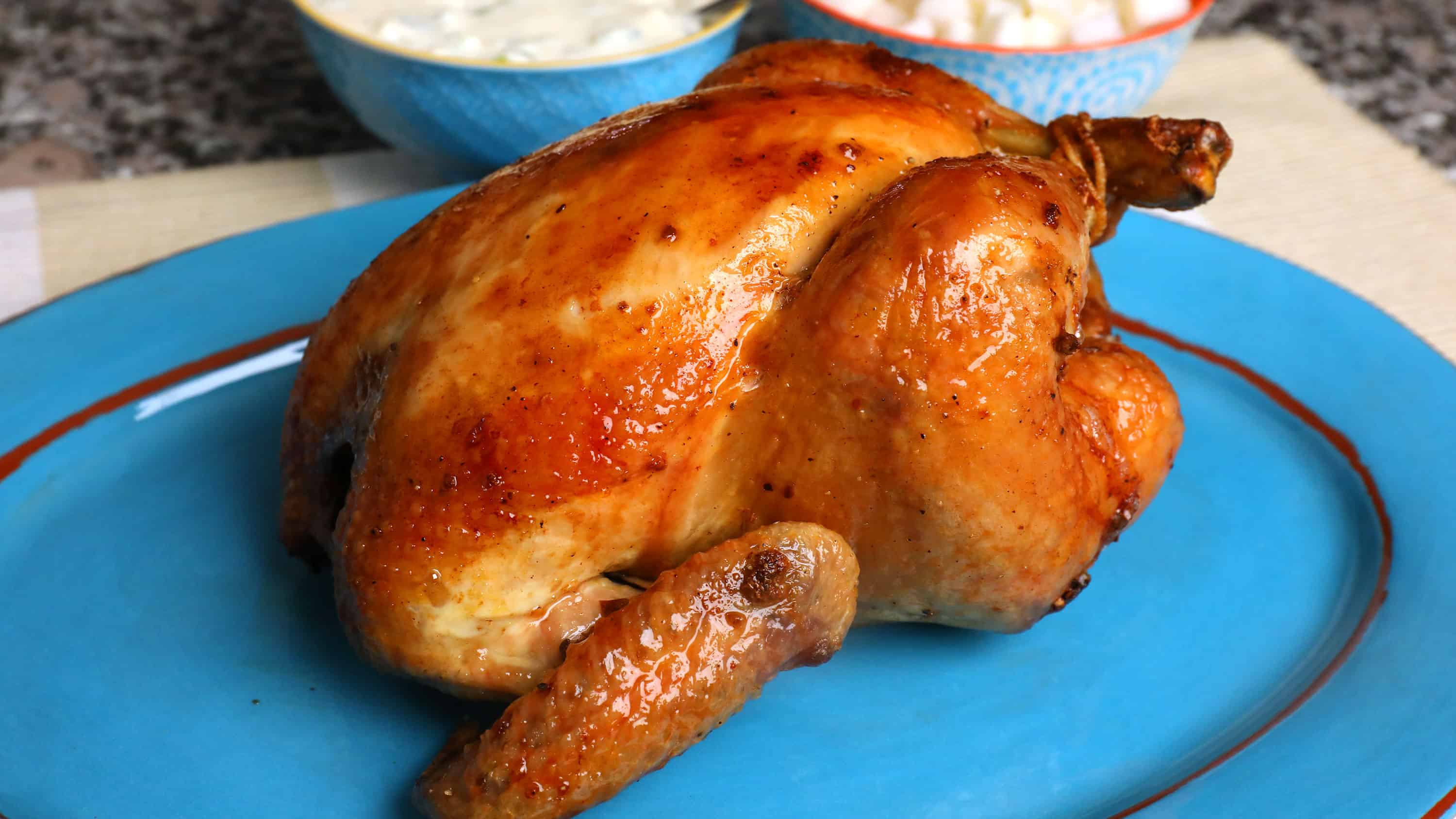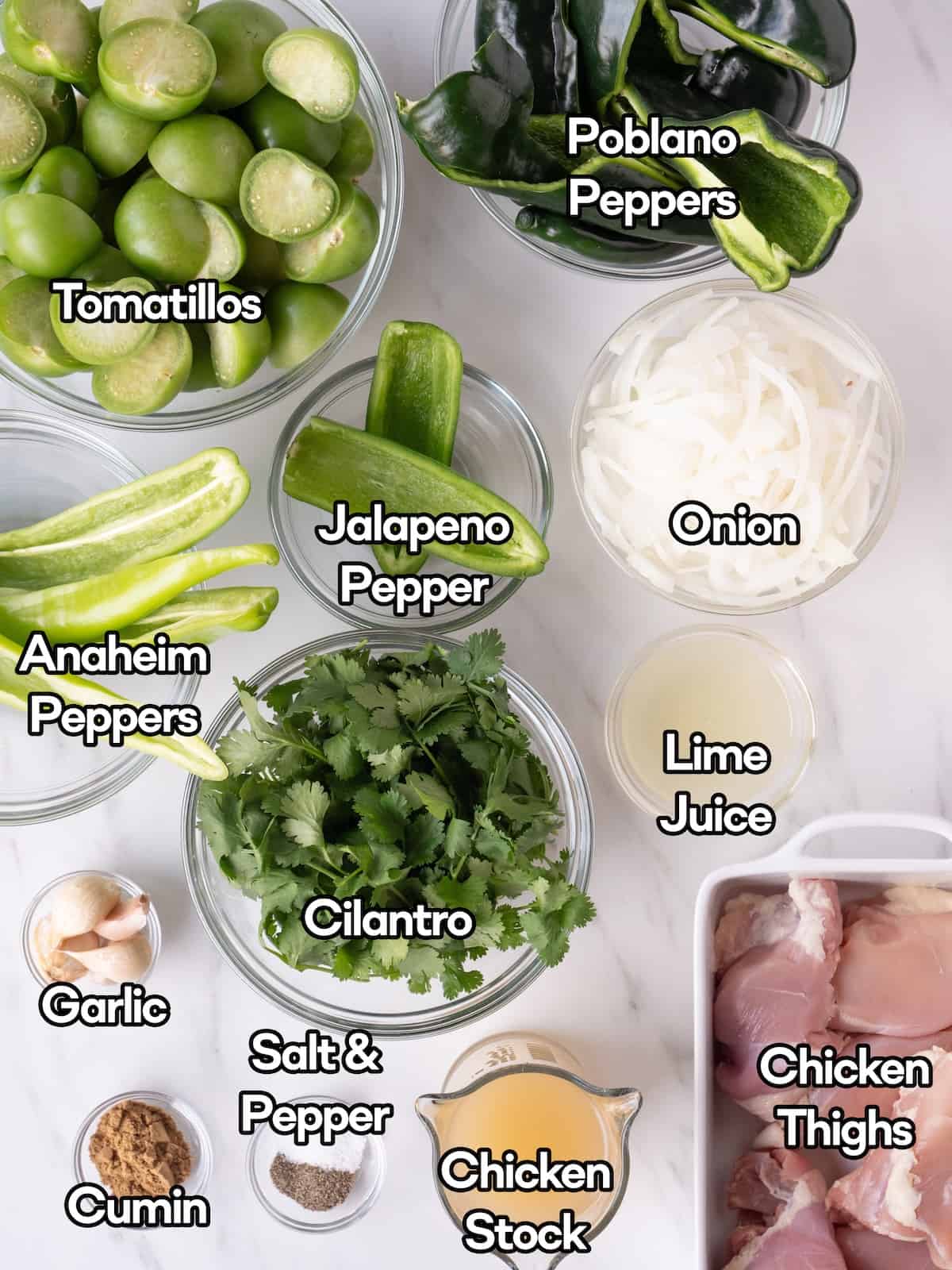Have you ever stared at a Mexican restaurant menu wondering what the heck chicken verde actually is? Trust me, you’re not alone! I’ve been there too, puzzled by this mysterious green dish that seems to pop up everywhere these days. After cooking batches of this stuff for weeks (and maybe getting a little obsessed), I’m excited to share everything I’ve learned about this delicious Mexican-inspired creation.
What Exactly Is Chicken Verde?
Chicken verde is a vibrant Mexican-inspired dish that features tender chicken simmered in a flavorful green sauce The name “verde” literally translates to “green” in Spanish, which perfectly describes the signature sauce made from tomatillos, green chiles, cilantro, and other aromatic ingredients.
At its heart, chicken verde is comfort food with a kick. The combination of tangy tomatillos, spicy chilies, and fragrant herbs creates a complex flavor profile that’s simultaneously bright, savory, and sometimes spicy.
The Star of the Show: Salsa Verde
The cornerstone of any good chicken verde is the salsa verde – that vibrant green sauce that gives the dish its name and distinctive flavor, Here’s what typically goes into this amazing sauce
Key Ingredients in Salsa Verde:
- Tomatillos: These small, green fruits (not tomatoes!) provide the tangy backbone of the sauce
- Chiles: Typically jalapeños, serranos, or poblanos depending on desired heat level
- Cilantro: Adds fresh, herbaceous notes
- Onions & Garlic: Provide aromatic depth
- Lime juice: Brightens everything up
The beauty of salsa verde is in its preparation method. Most authentic recipes call for roasting or simmering the tomatillos and chiles before blending them with the other ingredients. This cooking process deepens the flavors and mellows the acidity of the tomatillos.
What Are Tomatillos Anyway?
Since tomatillos are so essential to chicken verde, let’s talk about these interesting little fruits. Tomatillos look like small green tomatoes wrapped in a papery husk, but they’re actually related to gooseberries, not tomatoes!
They have a bright, tangy flavor that’s slightly citrusy and less sweet than tomatoes. Before using tomatillos, you’ll need to:
- Remove the papery husks
- Rinse them well (they have a sticky residue)
- Either roast them for a deeper flavor or boil them for a brighter taste
Fun fact: I’ve found that roasting tomatillos brings out a slight sweetness that balances their natural tartness – definitely my preferred method!
Regional Variations of Chicken Verde
Like many beloved dishes, chicken verde has different interpretations depending on the region. Here are some notable variations:
- Yucatán Style: Sometimes incorporates orange juice or achiote paste for complexity
- Puebla Version: May be thickened with ground pumpkin seeds (pepitas)
- Oaxacan Influence: Might include green mole paste for added depth
- Northern Mexico: Often features more chiles for extra heat
In the US, you’ll find plenty of adaptations too. Some recipes add cream or sour cream for richness, while others incorporate additional vegetables like bell peppers or corn.
How Spicy Is Chicken Verde?
One question I get all the time is “How hot is this stuff gonna be?” Well, the beauty of chicken verde is that you control the heat! The spiciness typically comes from the chiles you choose:
- Mild: Use poblano peppers or just one deseeded jalapeño
- Medium: A couple of jalapeños with seeds
- Hot: Several jalapeños or serrano peppers
- Extra Hot: Add some habaneros if you’re feeling brave!
Remember that removing the seeds and membranes from peppers significantly reduces their heat. I usually go for a medium heat level – enough to notice but not enough to overwhelm the other flavors.
Chicken Verde vs. Green Salsa: What’s the Difference?
It’s easy to get confused between chicken verde and green salsa since they share similar ingredients. Here’s the key difference:
Chicken Verde is a complete dish featuring chicken simmered in a green sauce, often including other vegetables and served as a main course.
Green Salsa is simply the sauce itself, typically served as a condiment for tacos, burritos, or chips.
Think of it this way: chicken verde uses green salsa as its base, but transforms it into a hearty meal by adding protein and sometimes additional ingredients.
How to Make Chicken Verde at Home
Ready to try making chicken verde yourself? Here’s my simplified approach:
Ingredients You’ll Need:
- 2 lbs chicken (breasts or thighs work great)
- 8-10 tomatillos
- 1-2 poblano peppers
- 1-4 jalapeños (depending on heat preference)
- Half an onion
- 4 garlic cloves
- Fresh cilantro (about 15-20 sprigs)
- 1 tablespoon Mexican oregano
- 1/2 teaspoon cumin (optional)
- Salt and pepper to taste
Basic Preparation Method:
- Prepare the chicken – You can brine it for extra flavor or simply season well
- Roast the tomatillos and peppers until slightly charred
- Blend the sauce ingredients until smooth but still slightly chunky
- Simmer the sauce with seasonings for a few minutes
- Add the cooked, shredded chicken and let it absorb all those flavors
The great thing about chicken verde is that it’s pretty forgiving. Don’t have poblanos? Just use more jalapeños and adjust the heat. No Mexican oregano? Regular oregano will work in a pinch (though the flavor is different).
Is Chicken Verde Difficult to Make?
Good news! Despite its complex flavors, chicken verde is surprisingly easy to prepare. The most “complicated” part is probably roasting and blending the sauce ingredients, but even that is pretty straightforward.
If you’re really short on time, some people even use store-bought salsa verde as a shortcut. I don’t recommend this for your first authentic experience, but it’ll do in a pinch!
Serving Suggestions: What Goes Well With Chicken Verde?
One of the things I LOVE about chicken verde is how versatile it is. Here are some of my favorite ways to serve it:
- Tacos: Wrapped in warm corn tortillas with diced onion and cilantro
- Burritos: Combined with rice, beans, and cheese
- Tostadas: Spread on crispy tortillas with refried beans and queso fresco
- Tortas: As a filling for Mexican sandwiches
- Rice bowls: Served over white or Mexican rice
- Enchiladas: Rolled in tortillas and baked with more sauce and cheese
Great Side Dishes to Serve With Chicken Verde:
- Mexican rice
- Refried or black beans
- Mexican street corn
- Simple green salad
- Warm tortillas
- Guacamole or sliced avocados
Can I Customize Chicken Verde?
Absolutely! That’s one of the best things about this dish. Here are some popular customizations:
- Protein swaps: Try pork, beef, or even tofu instead of chicken
- Veggie additions: Add roasted corn, potatoes, or bell peppers
- Creaminess factor: Stir in some Mexican crema or sour cream
- Bean boost: Add black beans or pinto beans
- Cheese please: Top with queso fresco or Monterey Jack
Making Ahead and Storing Chicken Verde
Chicken verde actually gets BETTER after a day in the fridge as the flavors meld together. Here’s how to store it:
- Refrigerator: Store in an airtight container for 3-4 days
- Freezer: Freezes well for up to 2-3 months
- Reheating: Gently warm on the stove or microwave, adding a splash of water if it seems too thick
I often make a double batch on Sunday and use it throughout the week for quick lunches and dinners. Talk about meal prep winning!
Frequently Asked Questions About Chicken Verde
Can I use canned tomatillos instead of fresh?
Yes! While fresh tomatillos provide the best flavor, canned ones work well too. Just drain them well before using.
Is chicken verde gluten-free?
Typically, yes! The traditional ingredients in chicken verde are naturally gluten-free. Just be careful with any pre-made seasonings or sauces that might contain gluten.
Can I make chicken verde in a slow cooker?
Absolutely! It’s actually perfect for slow cooking. Just blend your sauce ingredients, add them to the slow cooker with the chicken, and cook on low for 6-8 hours or high for 3-4 hours.
What’s the best cut of chicken to use?
Thighs tend to stay more tender and flavorful, but breasts work well too if you prefer leaner meat. Bone-in cuts add more flavor but require more prep.
Final Thoughts
Chicken verde is one of those magical dishes that manages to be both comforting and exciting at the same time. The bright, tangy sauce paired with tender chicken creates a meal that’s perfect for both weeknight dinners and special occasions.
Whether you’re new to Mexican cuisine or a seasoned pro, chicken verde deserves a spot in your recipe rotation. It’s relatively easy to make, endlessly customizable, and guaranteed to bring a little south-of-the-border sunshine to your dinner table.
Have you tried making chicken verde at home? What’s your favorite way to serve it? I’d love to hear your experiences in the comments below!
P.S. If you give this a try, tag me in your food pics! I’m always looking for new twists on this classic dish.

How to Store Chicken Chili Verde
You can store this in the fridge for 3-4 days in an airtight container. Make sure you reheat it properly so it is warmed through to safe temperature.
Why I Love This Recipe
Chicken Chili Verde was a HIT when we were kids growing up in Tucson. Id go over to my best friends house anytime this was on the menu. Literally its one of the easiest things to make and I cant get enough. Its especially perfect because its feels freezing in LA right now and I know that means its even colder in the rest of the country. Its 100% healthy if you leave out the chips and just serve it on its own as a soup/chili/stew. Trust me, youre going to want this one on regular rotation for the next few months. Its that good.
The cooking method is similar to how we make my Mexican shredded chicken. And it also has the most delicious peppery base with poblanos and other assorted peppers that are easy to come by at the grocery store! Ugh, literally cant get enough! If you are in a rush and using store-bought rotisserie chicken, I have a perfect and easy white chicken chili recipe that uses that. Another quick option is to use ground chicken, which I usually put in my chipotle chicken chili or ground turkey for an easy turkey chili.
Poblano peppers are commonly mislabeled at the grocery store – sometimes they are called Pasilla peppers. They are dark green and shiny. And while they have a little bit of smokiness to them, they are not spicy once cooked! I love these peppers and you will usually see me adding this to tons of recipes like the poblano chicken fajitas.
Anaheim peppers are light green and not spicy at all! If you cant find them in the produce section, Ive seen them a time or two in the canned food aisle and you could easily substitute the canned peppers in this recipe. No need to roast them if youre using canned.
Jalapeño peppers I think we all know what these are. If you want to majorly cut down on spice, just use half. But this recipe isnt super spicy as is!! But just a heads up if youre making it for say, a 3 year old, maybe omit the jalapeño.

- Tomatillos husked and halved
- Poblano Peppers
- Anaheim Peppers
- Jalapeño Pepper
- Yellow Onion
- Garlic Cloves
- Cilantro
- Lime
- Ground Cumin
- Kosher Salt
- Black Pepper freshly ground
- Chicken Stock
- Chicken Thighs
*For a full list of ingredients and instructions please see recipe card below.
